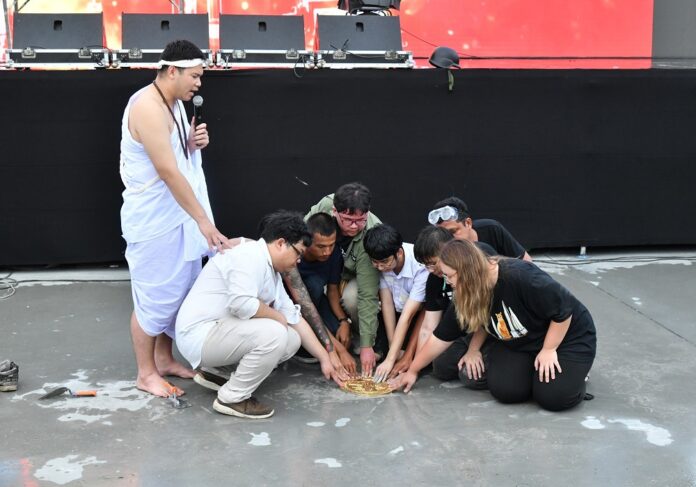
BANGKOK — A state official filed a police complaint Monday against activists who installed a plaque celebrating a revolt that introduced democracy to Thailand.
Fine Arts Department director Sataporn Thiengtham said the group behind the plaque, which was placed on Sanam Luang but has since been removed, broke the laws that protect historic sites. A guilty verdict could see the offender jailed up to three years and fined up to 300,000 baht.
“We don’t know how many could be charged yet,” Sataporn said. He also denied allegations that his complaint was politically motivated.
But the department took no action when several key monuments associated with the 1932 revolution that toppled the absolute monarchy disappeared in recent years. They include the commemorative plaque on the Royal Plaza and a memorial to the revolutionaries’ victory in Laksi neighborhood.
“We still have to look into the details,” Sataporn said when asked by a reporter. “We haven’t [filed a complaint] yet.”
A ‘successor’ of the Royal Plaza plaque, which went missing in 2017, was placed at Sanam Luang during an anti-government protest on Sunday.
The bronze disc featured a picture of the three-finger salute and an inscription “At this place the people have expressed their will: that this country belongs to the people and is not the property of the monarch as they have deceived us.”

By Monday morning, the new plaque was also removed from Sanam Luang. Police said security officials took it away for “investigation.”
Government critics say the Fine Arts Department and the police are weaponizing the law on architecture preservation against the protest leaders.
Chatri Prakitnonthakarn, a professor of architecture at Silpakorn University, said the department didn’t seem to mind when city workers paved over parts of the grass at Sanam Luang with concrete some years ago.
“Two or three years ago, it was the department which approved the paving of concrete over the grass lawn,” Chatri said. “That’s an act of destroying a historical site. Was [what the students did] really an act of destroying a historical site? This is using the law for political ends.”
Saranyoo Thepsongkraw, an assistant professor of history at Kasetsart University shared a similar view. Saranyoo said the Fine Arts Department also routinely allowed tourist buses to park in the field of Sanam Luang without any qualms.
“This is a political case,” Saranyoo said, adding that he didn’t see the department make any move when other relics related to the 1932 revolution disappeared.
Related stories:
















































